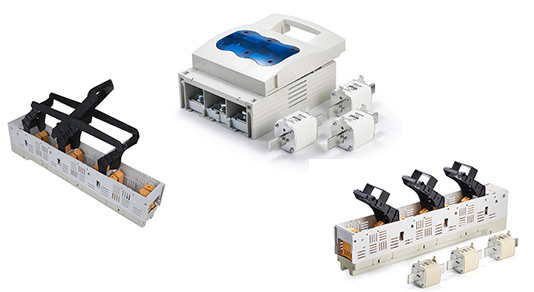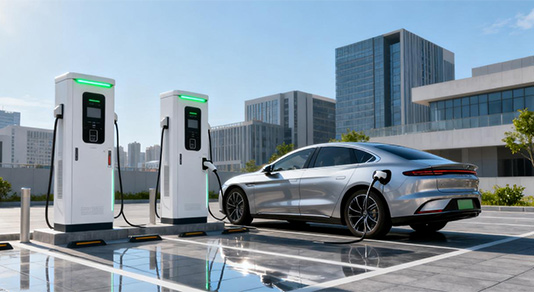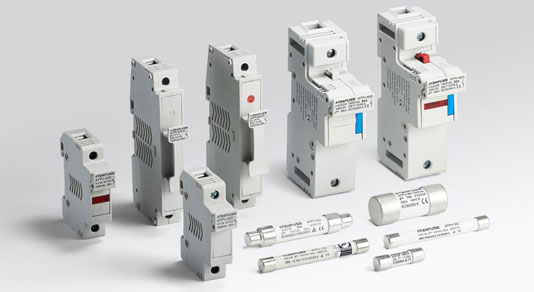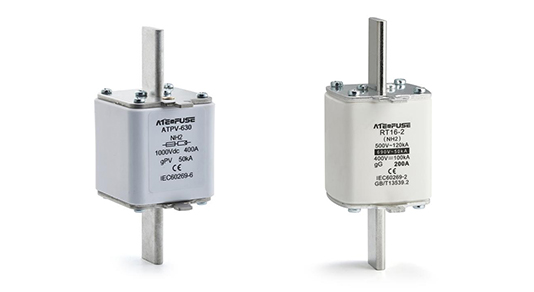What is the difference between EV Fuse and Telecom Power Fuse?
In the intricate web of modern electrical systems, fuses play a crucial role as safety sentinels, safeguarding circuits from overcurrent hazards. However, not all fuses are created equal, and two specialized types – the EV fuse used in electric vehicles and the telecom power fuse deployed in telecommunication power systems – have distinct characteristics tailored to their respective applications.
I. Operating Environment Demands
-
Temperature Extremes: Electric vehicles experience a wide temperature range during operation. EV fuses must endure both the sweltering heat generated by the vehicle's power electronics and motors during intense driving or rapid charging, which can soar well above 100°C, as well as the frigid cold in winter conditions, sometimes dipping below -20°C. In contrast, telecom power systems, while housed in controlled environments like equipment rooms, still face moderate temperature fluctuations. Telecom power fuses typically operate within a narrower band, usually between 0°C to 50°C, as excessive heat buildup is dissipated effectively through cooling systems, but stability is key to prevent signal disruptions caused by component overheating.
-
Vibration and Mechanical Stress: EVs are constantly on the move, subjecting components to incessant vibrations from rough roads, acceleration, and braking. EV fuses are engineered with robust mechanical structures, often incorporating shock-absorbing materials and secure mounting mechanisms to withstand these forces without loosening connections or compromising internal integrity. Telecom power installations, on the other hand, are relatively static, experiencing minimal vibration. Their fuses focus more on maintaining electrical performance in a fixed, vibration-free setting, with less emphasis on mechanical durability against dynamic loads.

ATEV-MD Series DC 500V EV Fuse
II. Electrical Specifications and Performance
-
Current Ratings: EVs, especially during high-power charging or rapid acceleration, demand fuses with relatively high current-carrying capabilities. For example, fast-charging EVs may require fuses rated up to several hundred amps to handle the surges. Telecom power systems, meanwhile, operate at lower and more consistent current levels, with typical fuses rated from a few amps to tens of amps, as they mainly supply power to signal processing equipment, routers, and base stations where the power draw is steady and not subject to such extreme spikes.
-
Interruption Capacity: When a fault occurs, an EV fuse must be able to quickly and safely interrupt extremely high fault currents, often in the thousands of amps, to protect the costly battery pack and power electronics. This demands advanced arc suppression technologies and materials with high dielectric strength. Telecom power fuses, while needing to handle faults promptly, deal with comparatively lower fault currents, typically in the hundreds of amps range. Their interruption mechanism is optimized for rapid response to safeguard sensitive communication equipment from damage due to short circuits without generating electromagnetic interference that could disrupt signals.
III. Size, Form Factor, and Packaging
-
Compactness for EVs: Space is at a premium in electric vehicles, where every cubic centimeter matters for battery placement and overall vehicle design. EV fuses are designed to be highly compact, often with innovative 3D geometries and integrated mounting solutions that allow them to fit snugly within the limited confines of the vehicle's power distribution units or battery management systems. They might be miniaturized versions of traditional blade fuses or custom-designed compact cartridges.
-
Standardization in Telecom: Telecom power systems favor standardized form factors for ease of installation, maintenance, and replacement. Telecom power fuses usually come in modular, rack-mountable packages or standardized pluggable cartridges that adhere to industry-wide dimensions. This enables technicians to quickly swap out faulty fuses during maintenance without complex reconfiguration, ensuring minimal downtime for critical communication infrastructure.

IV. Reliability and Service Life Expectancy
-
Longevity in Telecom: Telecom networks demand near-continuous uptime, and their power fuses are expected to have an extended service life. With stable operating conditions and regular preventive maintenance schedules, telecom power fuses can last for many years, often with a projected lifespan of 10 to 15 years or more, provided they are not subject to catastrophic faults.
-
Challenging Lifespan in EVs: EV fuses face a more arduous lifespan scenario. The combination of temperature cycling, vibration, and occasional high-current surges can degrade the fuse's internal components over time. Despite being built tough, their effective service life might be shorter, typically around 5 to 8 years, depending on driving habits and environmental factors, after which replacement is necessary to maintain vehicle safety and performance.
In summary, while both EV fuse and telecom power fuse share the fundamental purpose of protecting circuits, their differences in operating environment, electrical requirements, physical form, and longevity are vast. Understanding these distinctions is essential for engineers and technicians in their respective fields to ensure optimal system performance, safety, and reliability.





